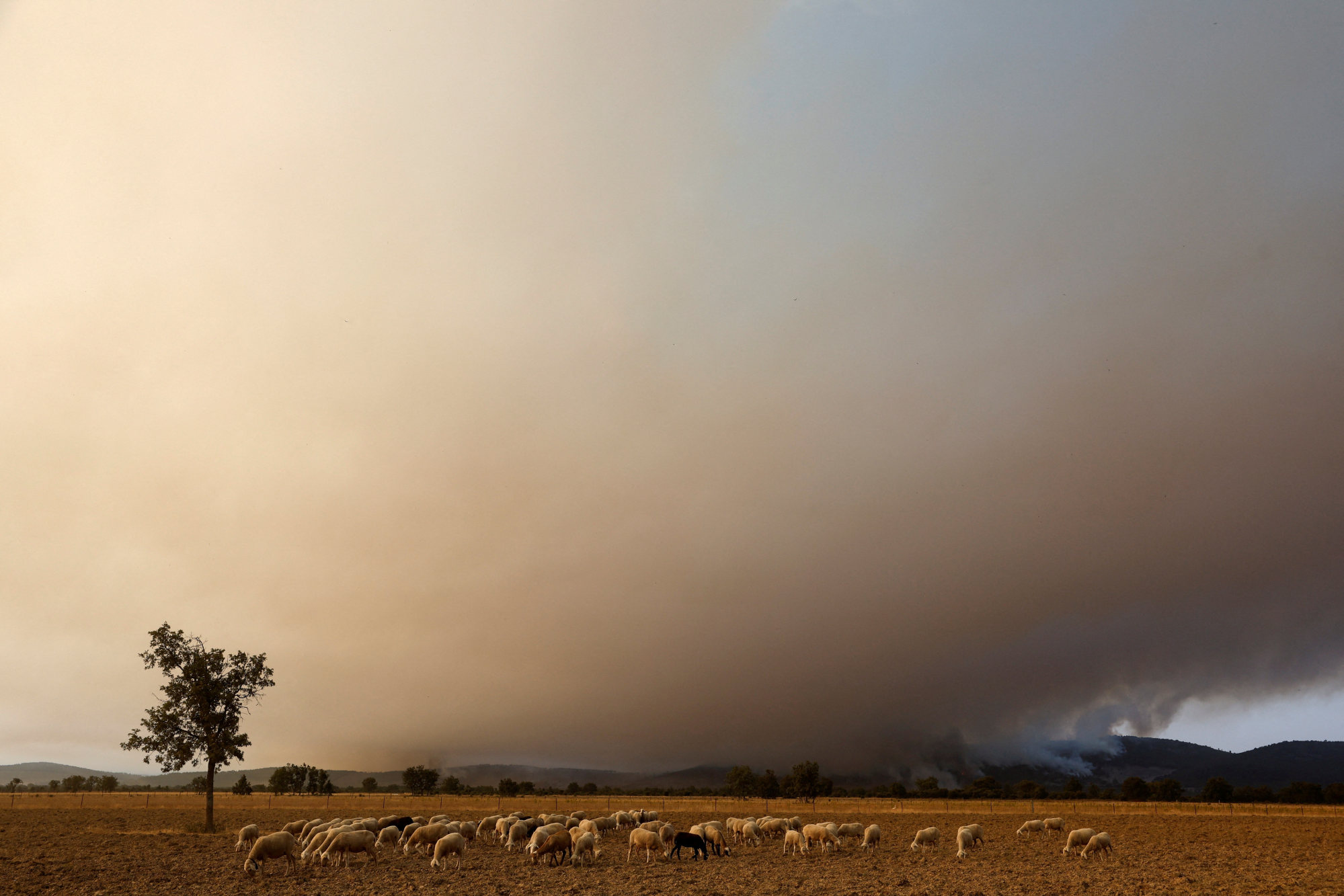
Wildfires continue raging ‘out of control’ in Spain, France amid Europe heatwave
- Spain has deployed the ‘majority’ of its fire-fighting aircraft as it fights over 30 fires across its forests in the second heat wave of the summer
- Thousands have been evacuated across France, while heat-related deaths in Spain rose significantly on the week
Firefighters struggled on Sunday to contain wildfires raging out of control in France and Spain as Europe wilts under an unusually extreme heat wave that authorities in Madrid link to a rise in excess mortality.
Two huge blazes that have been consuming pine forests for six days just south of the city of Bordeaux in southwest France have forced the evacuation of some 14,000 people, including many who were set to spend their vacation at campsites.
In Spain, firefighters supported by the armed forces’ emergency brigades are trying to stamp out over 30 fires consuming forests spread across the country. Spain’s National Defense Department said that “the majority” of its fire-fighting aircraft have been deployed. Many areas are rugged, hilly terrain that makes it difficult for ground crews to access.

Drought conditions in the Iberian Peninsula have made it particularly susceptible to wildfires, some caused by lightning, others by accident, and even some intentionally set, after a mass of hot air was blown up from Africa last week.
So far, there have been no fire-related deaths in France or Spain. In Portugal, a pilot of a firefighting plane died when his aircraft crashed on Friday.
But as temperatures remain unusually high, heat-related deaths have soared amid a heat wave that the European Union considers the work of climate change.
In Spain, the second heat wave of the summer has kept highs above 40 degrees Celsius in many areas, hitting peaks of 43 degrees Celsius regularly. According to Spain’s Carlos III Institute, which records temperature-related fatalities daily, 360 deaths were attributed to high temperatures from July 10-15. That was compared with 27 temperature-related deaths the previous six days.

The death of a street cleaner after he suffered heat stroke while working has led to the town hall of Spain’s capital giving the option for its street cleaners to work in the evenings to avoid the worst spells of the day.
In France, the fire in La Teste-de-Buch near the Atlantic coast has forced 10,000 people to flee the area popular for the Arcachon seaside resort. The Gironde regional government said on Sunday that “the situation remains unfavourable” due to gusting winds that, combined with hot and dry conditions, have fanned more flare-ups overnight. That led to a protracted struggle to protect campgrounds.
A second fire near the town of Landiras, south of a valley of Bordeaux vineyards, has forced authorities to evacuate 4,100 people this week, including some 1,900 on Saturday. Authorities said that one flank has been brought under control by the dumping of white sand along a two-kilometre stretch. Another flank, however, remains unchecked.

Overall more than 10,300 hectares of land have burned in the two fires.
Emergency officials warned that high temperatures and winds Sunday and Monday would complicate efforts to stop the fires from spreading further.
“We have to stay very prudent and very humble, because the day will be very hot. We have no favourable weather window. The site is very, very hot and very active,” regional fire official Eric Florensan said Sunday on local radio France-Bleu.
Temperatures are forecast up to 40 degree Celsius in the area, with Monday expected to be the hottest day in a stretch of extreme July weather.
Some of the most worrisome blazes in Spain are concentrated in the western regions of Extremadura and Castilla y León. Interior Minister Fernando Grande-Marlaska announced a joint command that will take over coordinating the efforts to battle the fires that are active in the adjoining regions.

Firefighters have been unable to stop the advance of a fire that broke out near the city of Cáceres that is threatening the Monfragüe National Park and has kept 200 people from returning to their homes.
Another fire in southern Spain near the city of Malaga has forced the evacuation of a further 2,500 people. There are more fires near the central city of Ávila, in northwest Galicia, among other areas.
Hungary, Croatia and the Greek island of Crete have also fought wildfires this week, as have Morocco and California.
The scorching temperatures have reached as far north as Britain, where its weather agency has issued its first-ever “red warning” of extreme heat for Monday and Tuesday, when temperatures in southern England may reach 40 degree Celsius for the first time.
That will still be relatively bearable compared with the 47 degree Celsius recorded in Portugal’s northern town of Pinhao on Wednesday, establishing a new national record.


